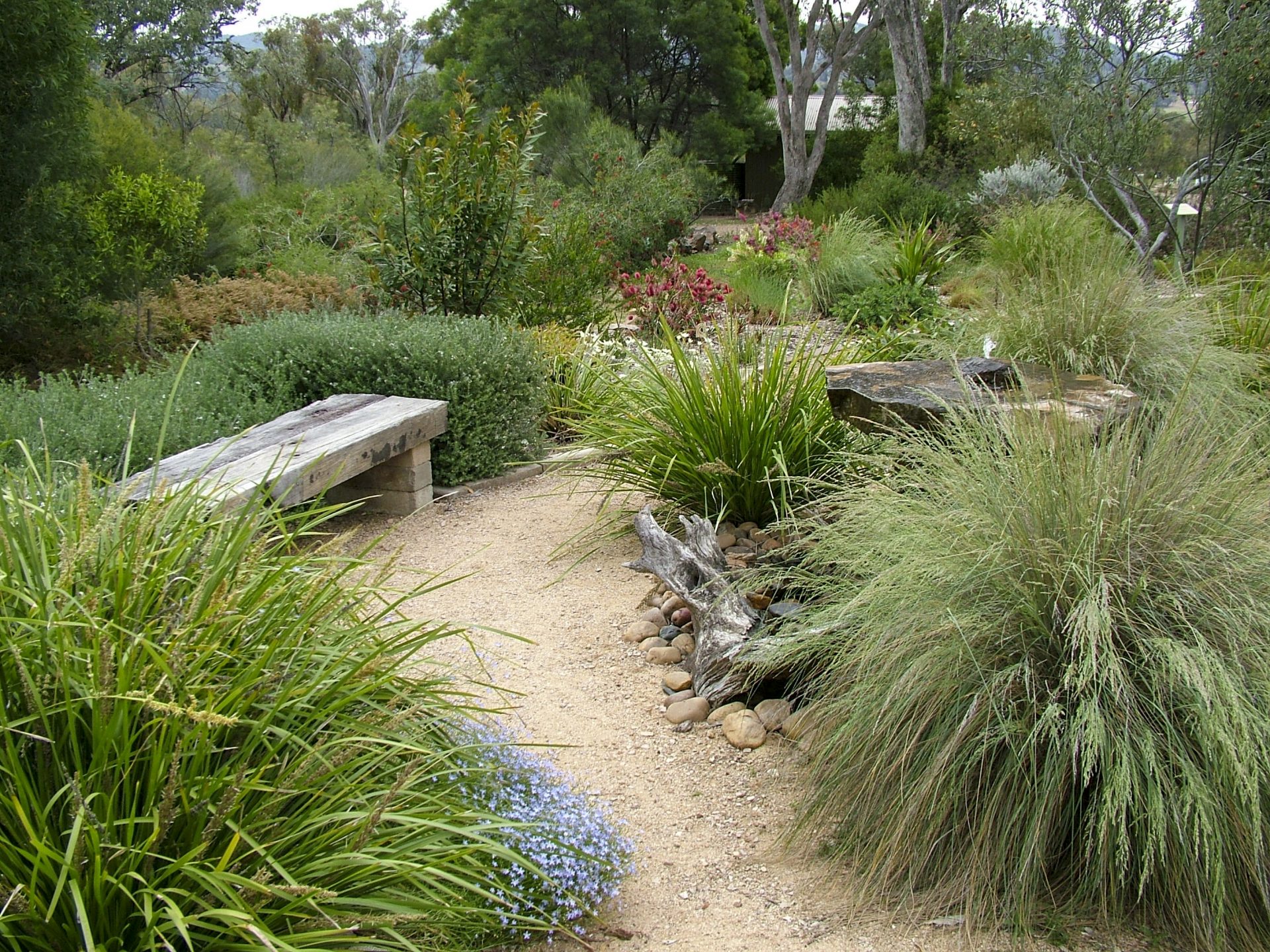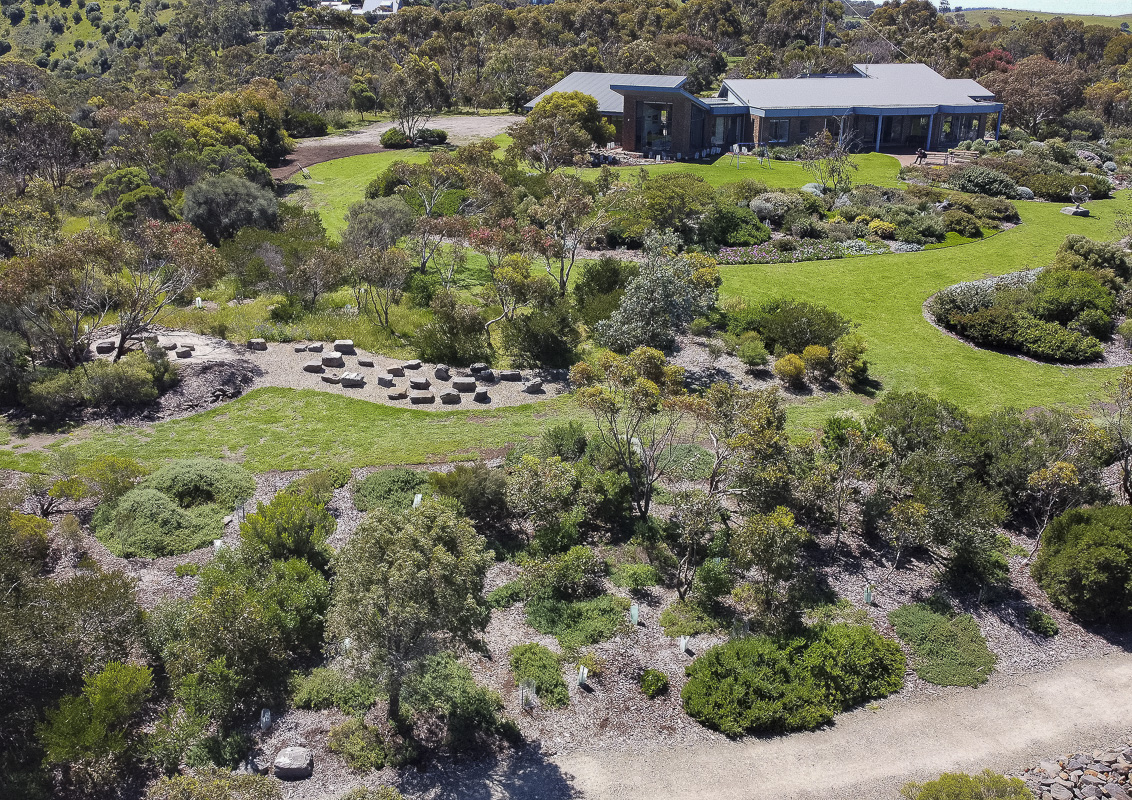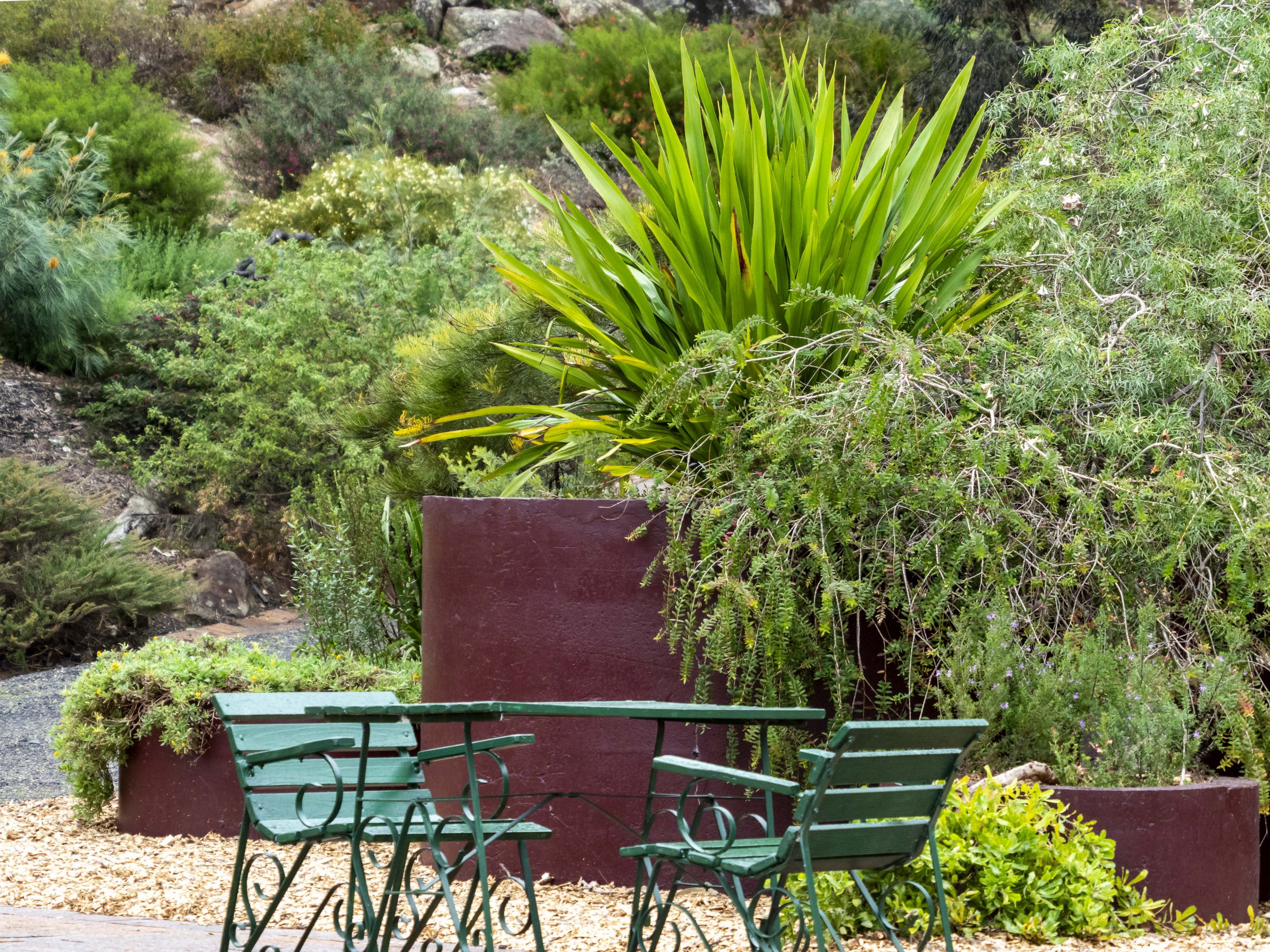Here are a few tips for designing a beautiful native garden.
Some gardens make us say ‘wow!’ as soon as we see them. We recognise such memorable gardens within the first few seconds of seeing them. If you want to instantly pick up your camera and start taking pics, you know it is a garden with impact.

Some gardens have an instant ‘wow’ response, image Jeff Howes
First impressions are long lasting. Our eyes instantly see and sweep over an all-encompassing garden landscape. They then land on specific details both large and small and including focal points. Often what catches our eye is how the hard and soft landscape come together to complement each other.
There are many attributes of a garden that making it visually stunning. All together, they influence how we perceive and rate a garden and how beautiful we think it is.
Here is a short list, in no particular order, of what to look for when you see a garden for the first time. Perhaps it will also serve as a checklist for planning and designing your own garden.
Remember though, your garden is for you. A garden for personal pleasure is very different to one for wider appreciation such as a public botanic garden. Your garden should exhibit your personality, interests and even which plants you favour.
Here are some tips for designing a beautiful garden.
Align the house and garden for better design
Complementary: Respecting the architectural qualities of the house will dictate much of the garden planning and design. This will ensure optimum visual and physical transition between the house and garden.

Toowoomba garden, aligning house with garden to create a sense of place, image Lawrie Smith
Sense of Place: Does the style of the garden ‘belong’ to its locality? Gardens that reflect and respect the local flora are generally most successful. They are responding to the location, local environment, soils and surrounding streetscape.
Views and borrowed landscape: Create and maintain view corridors and glimpses from the house and within the garden, to the wider garden or outside the garden. This creates a feeling of expansiveness and the opportunity for discovery. Preserving expansive views beyond the garden to adjoining landscapes will increase the apparent size of the garden – incorporate this wherever possible.
Screening: Hide those necessary functional but potentially visually negative elements, by careful screening.
Keep a consistent style of garden for a beautiful garden
Composition: How is the garden organised? Is the garden formal, with a geometric arrangement creating a more structured garden? Or is ita very informal garden with elements inspired by the beauty and complexity of a naturalistic landscape? Choosing the style of the garden is an important design decision.
Structures & materials: Plan and design structures and your hardscape materials to ensure they are aligned with the style of garden you are creating.
Rooms: Divide the garden into several distinct areas each with a specific plant palette or character, to add even more interest. Each room can be related to microclimate and/or function. Wandering through ‘rooms’ gives visitors the element of surprise.
Perspective: Geometric linear pathways, hedges or structures draw the eye simply and strongly into the garden. They change our perception of the space, by lengthening or compressing the view, depending on the relationship to the angles.

Imagination and focal points: Add interest, and possibly amusement, by imaginative use of distinctive garden elements. These can be both structures and plants. Place them in unusual ways to provide a memorable and unexpected experience! Consider locating focal points or special plants throughout the garden. Place them progressively or randomly, with the idea of leading the visitor from point to point and encouraging wider exploration of the garden.
Carefully select plants and where you put them
Continuity: How are are forms, textures and colours of the plant material organised to complement or contrast with each other? Is there a sense of harmony or is it more startling and energetic? Compare the extreme difference between the luxuriant, broad textured, monochromatic appearance of a shaded rainforest garden, against a sunny garden of species with fine leaf textures and brilliant primary coloured flowers. Continuity of visual character results in good design.
Diversity: Multiple colours of flower and foliage are attractive because of sheer exuberance and spectacle. In addition, careful massing of blocks of colour or texture increases visual appeal. Viewers are much more aware of your design.
Attraction: A uniform garden mix of similar plants can create a monotonous looking garden. You can relieve this by integrating contrasting plants or features that attract the eye against a background of similar vegetation.
Sunshine and shadow: The north and souths side of a house are opposite environmental conditions for your plant collection. Ensure you establish the right plant in the right microclimate to maximise the visual diversity throughout the garden.
Memorable: Aim to create a garden which immediately springs to mind long after first observed. Perhaps it will be because of the use of plants not commonly seen in gardens or by other unique features.
Change: Seasonal changes to foliage and flowers always ensure the garden is stays fresh and new – maximise these ephemeral opportunities.
Sense of scale: Locate major plant specimens carefully so that their ultimate size and form fits the garden design, and will remain so over time.
So these are a few tips for designing a beautiful garden.
For ore information about native garden design, see here.
Good luck with your designing!

 Australian Native Plants Society (Australia)
Australian Native Plants Society (Australia)